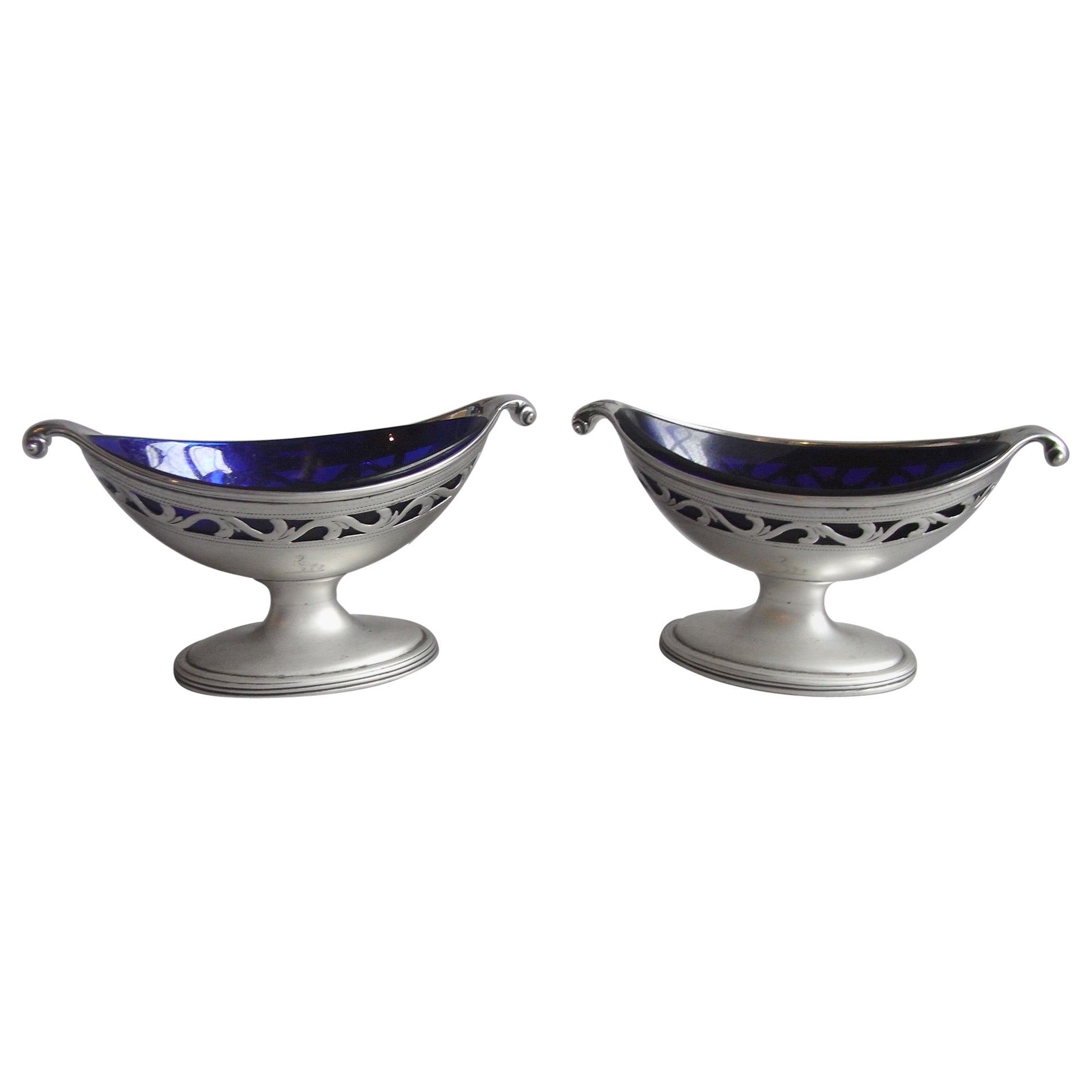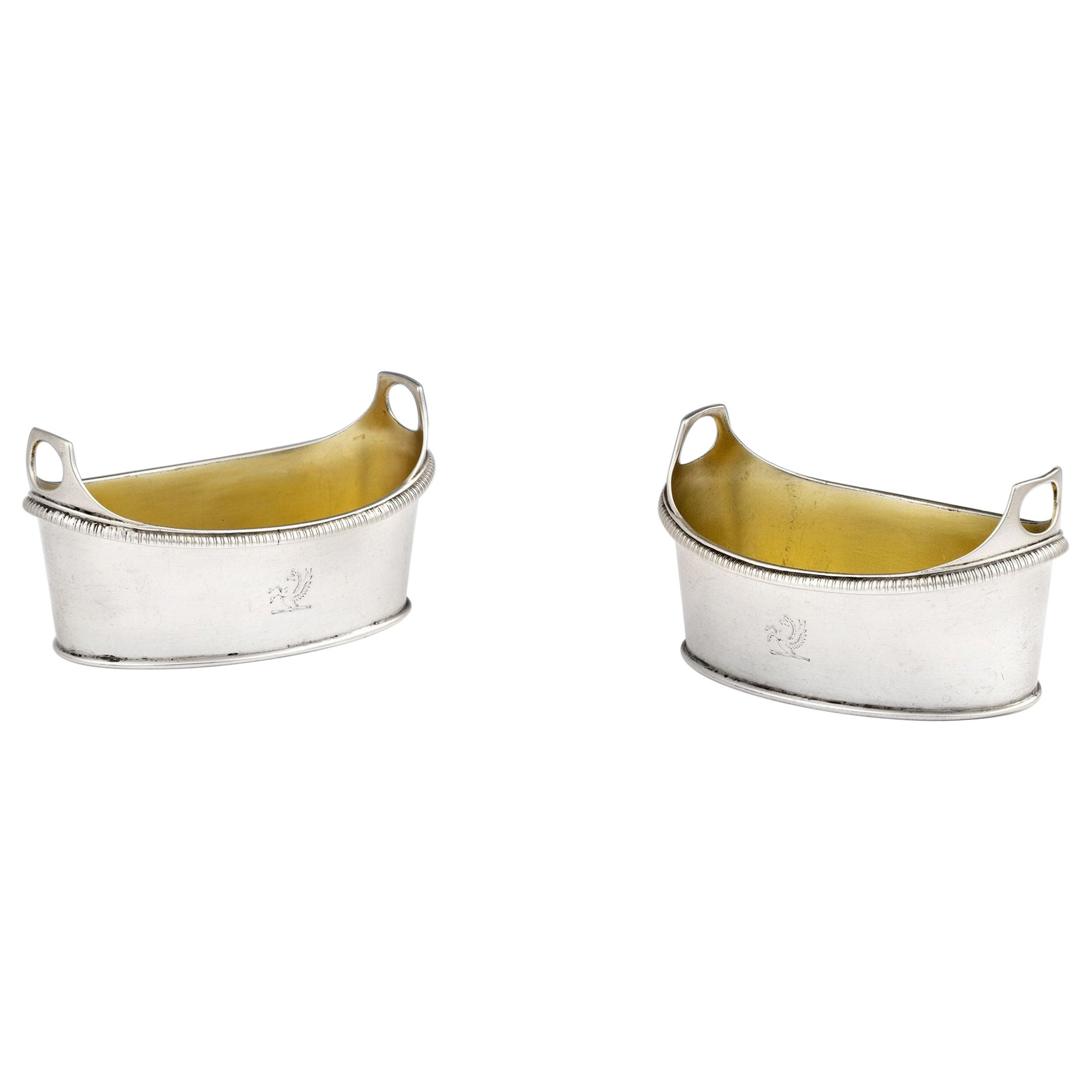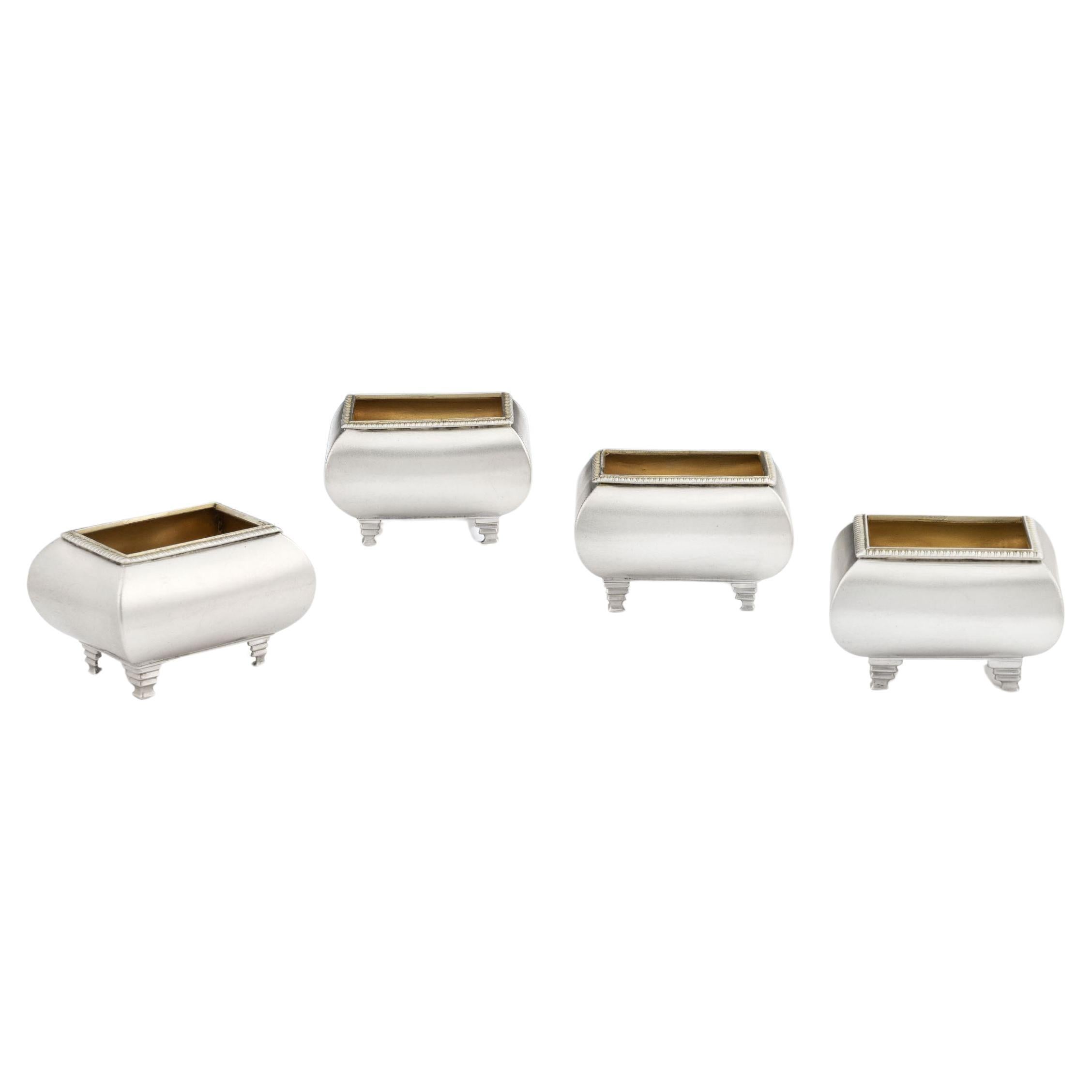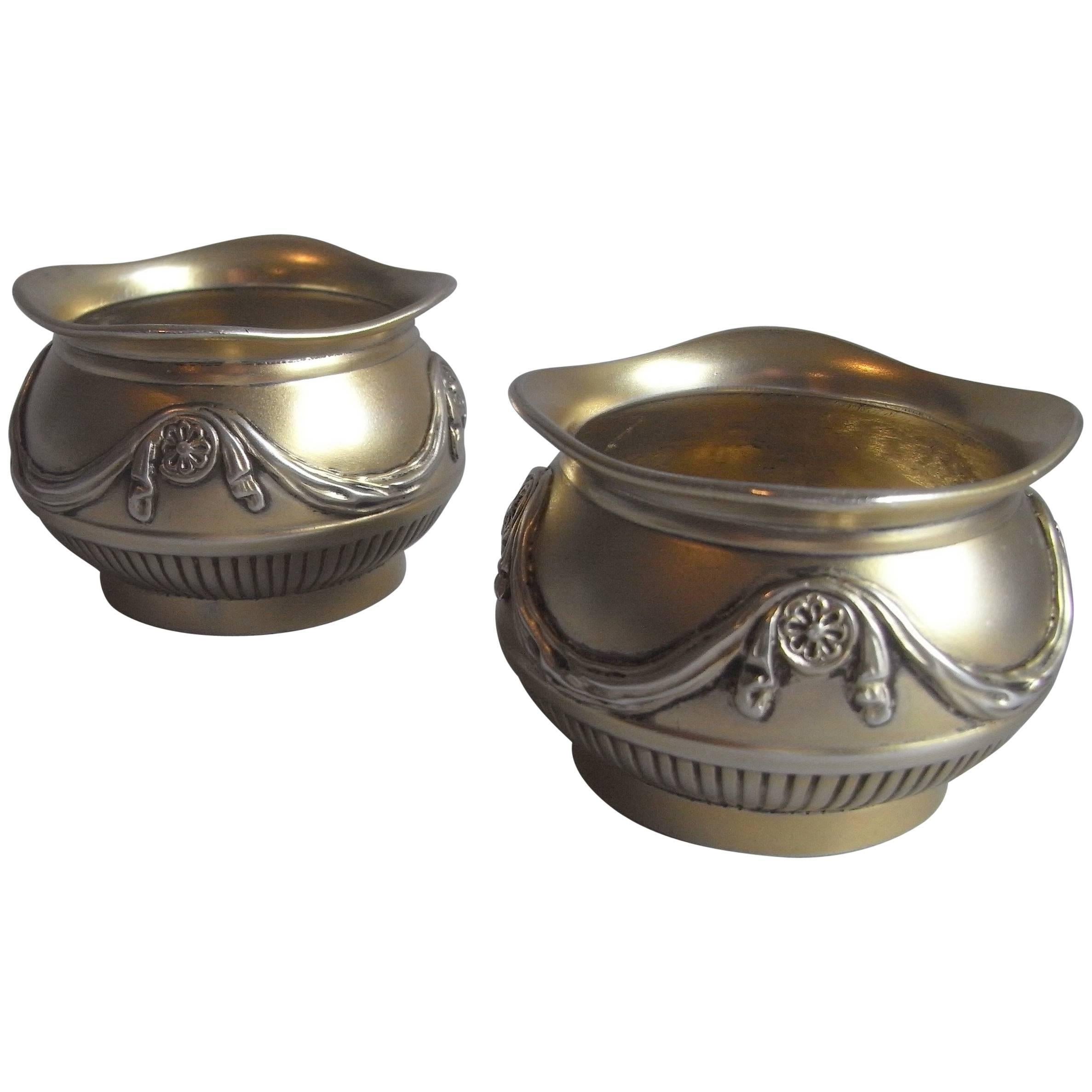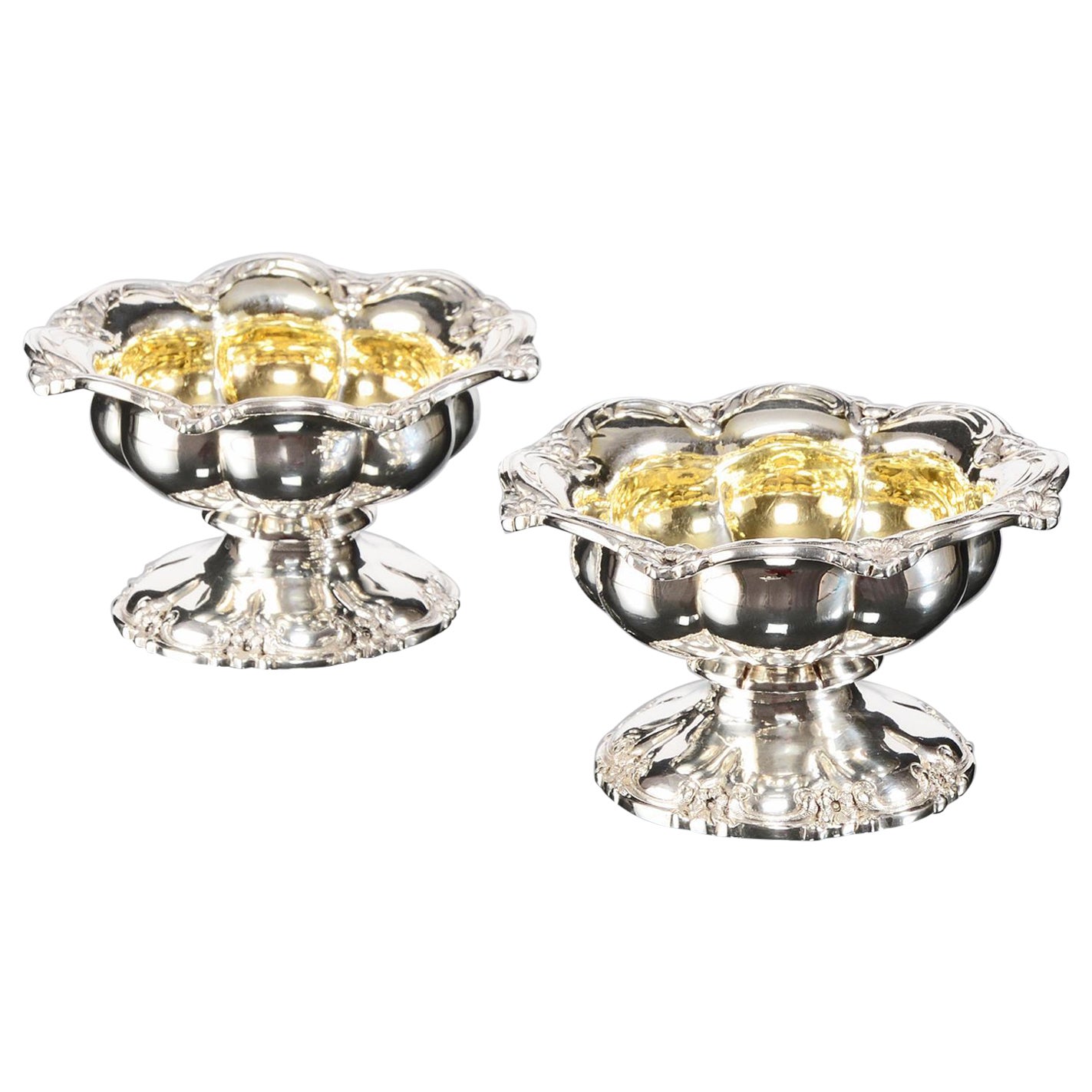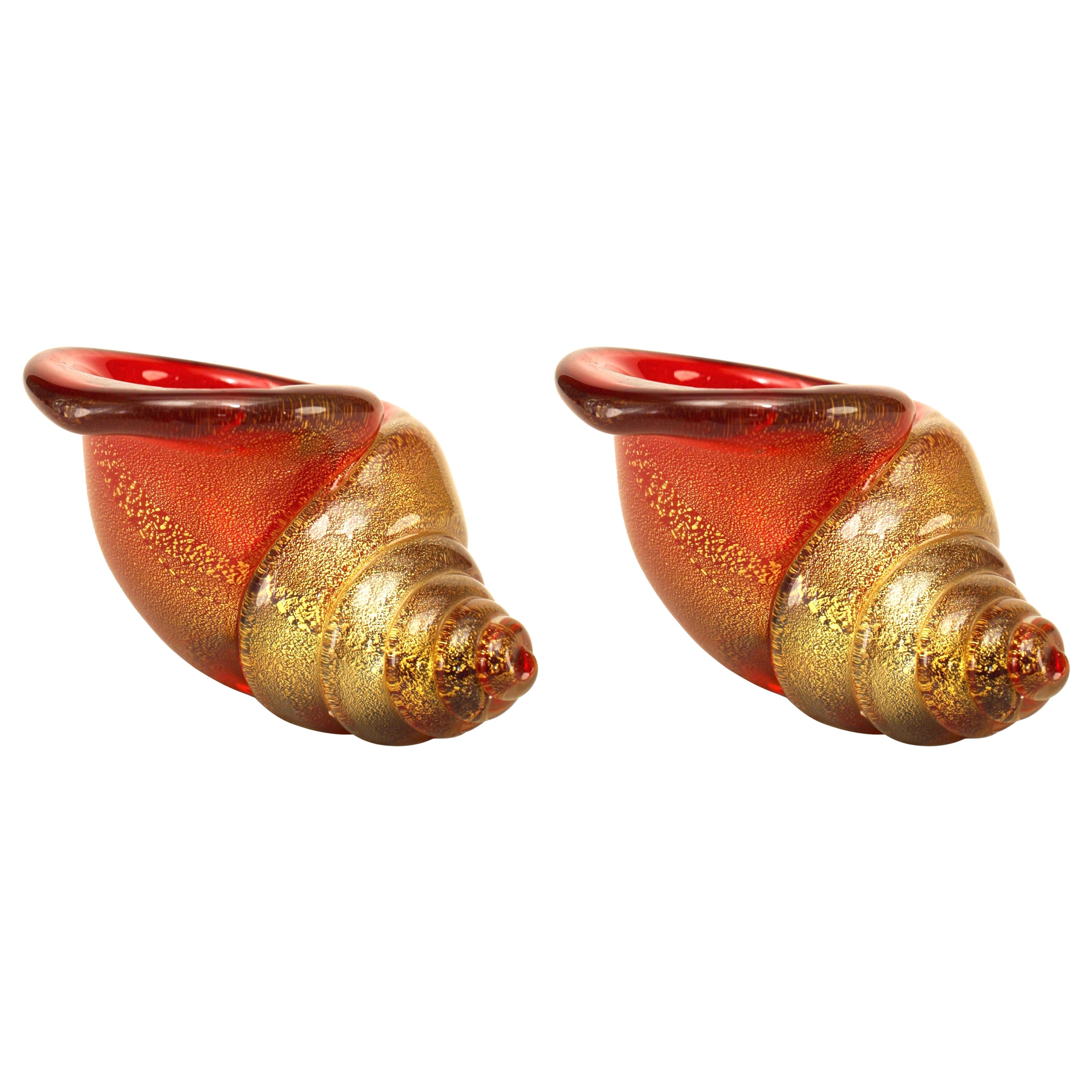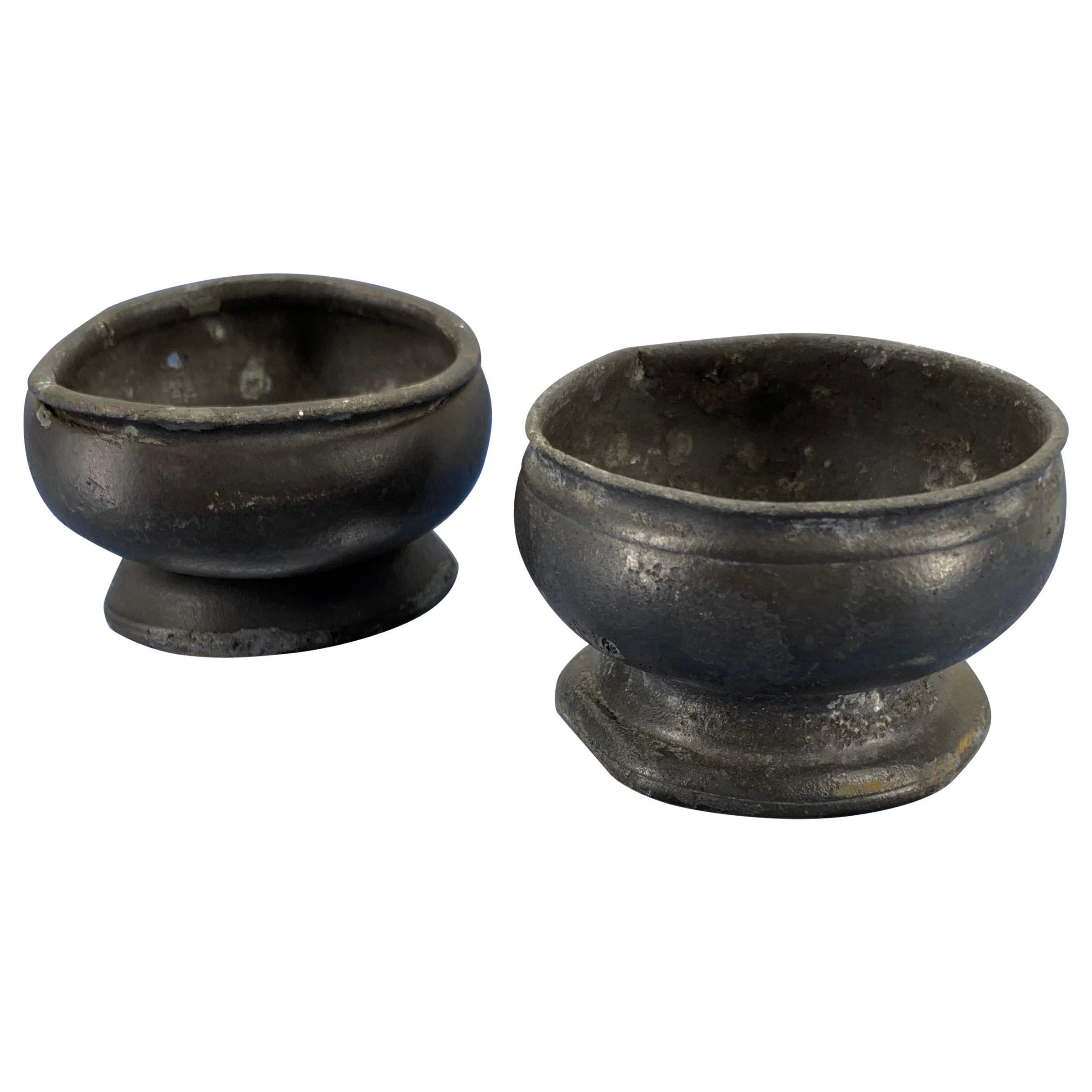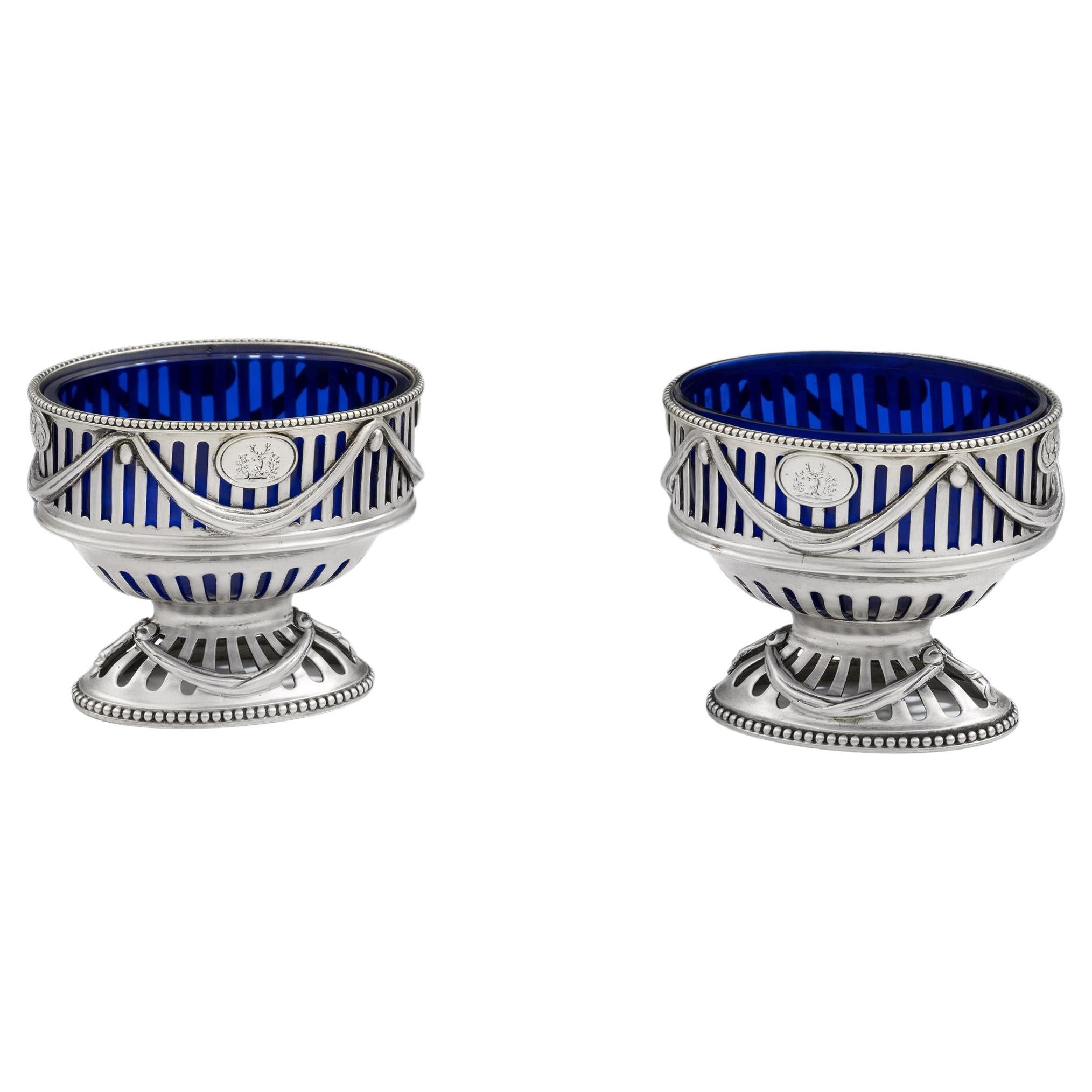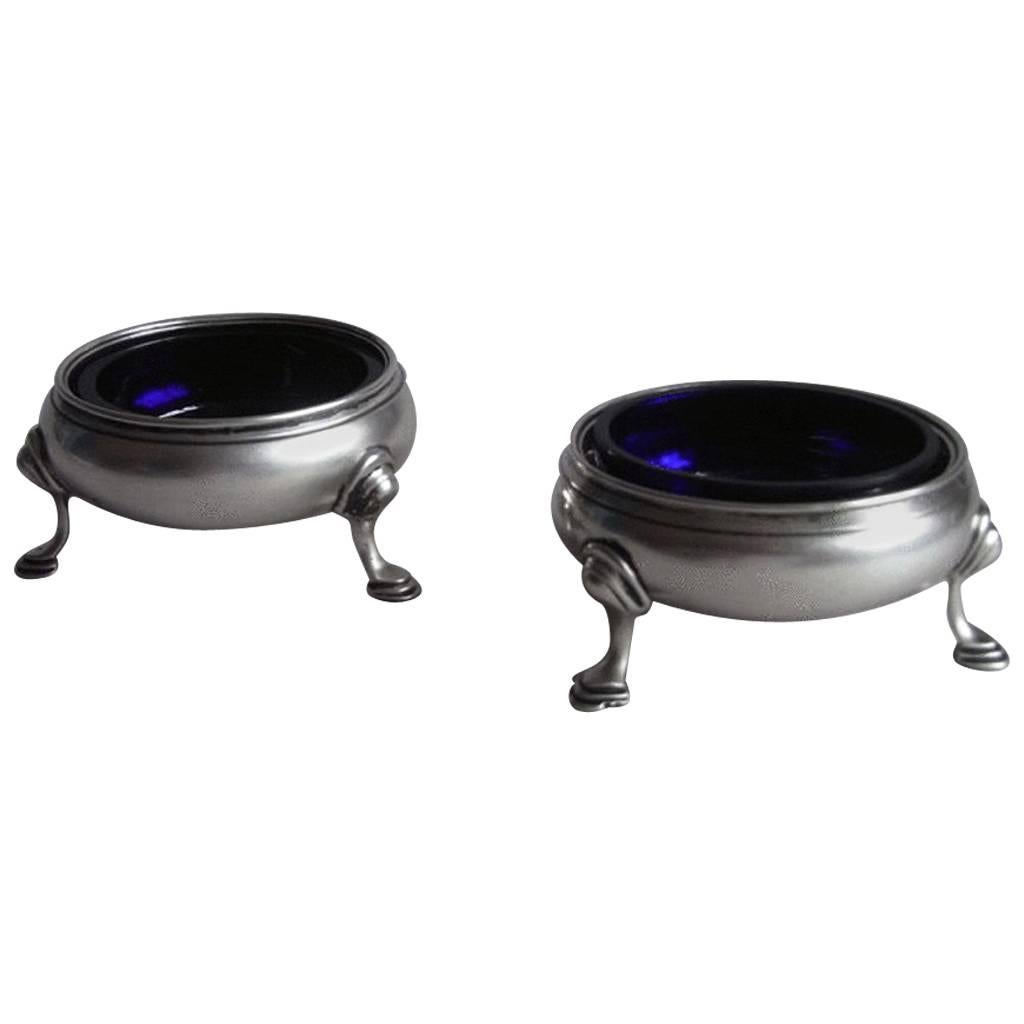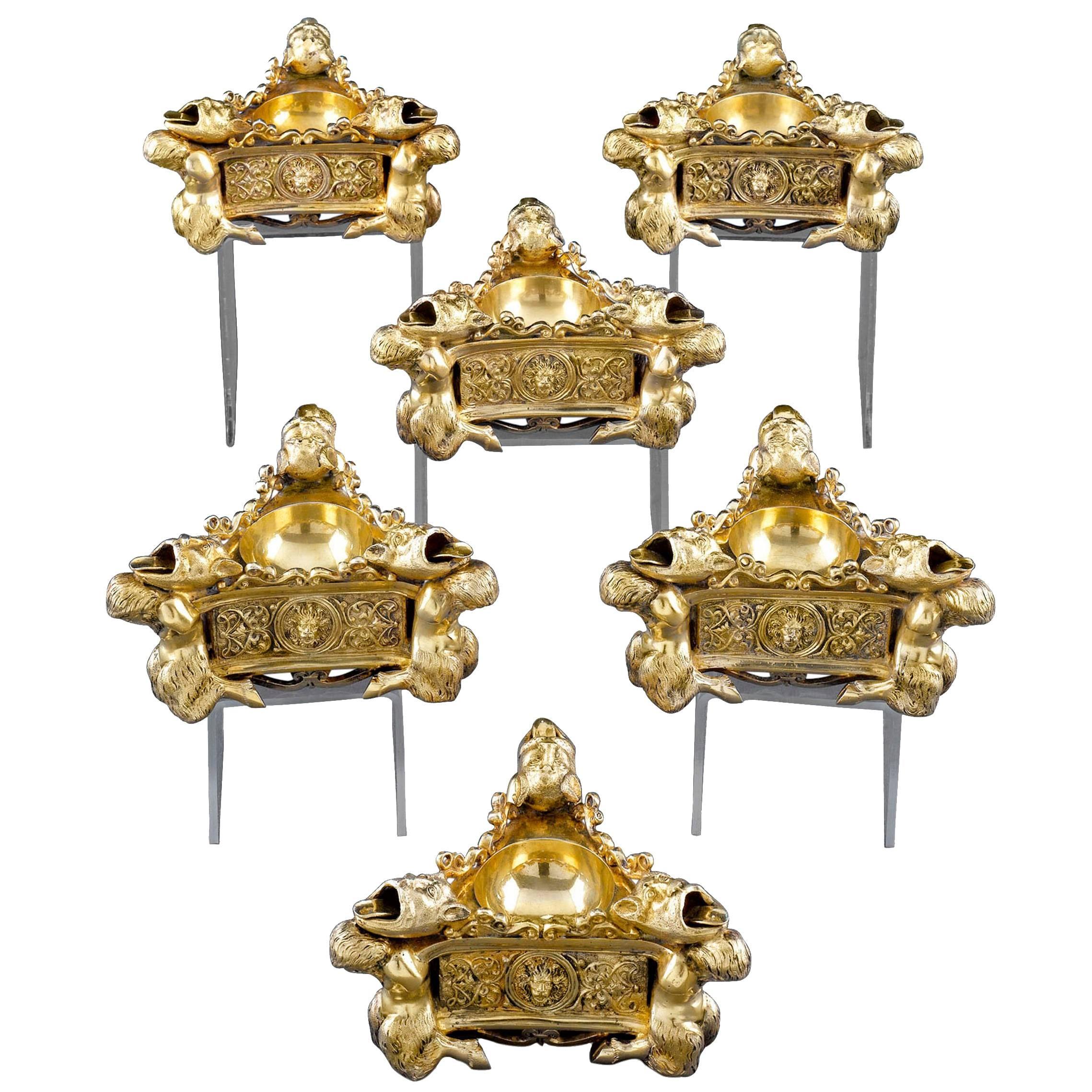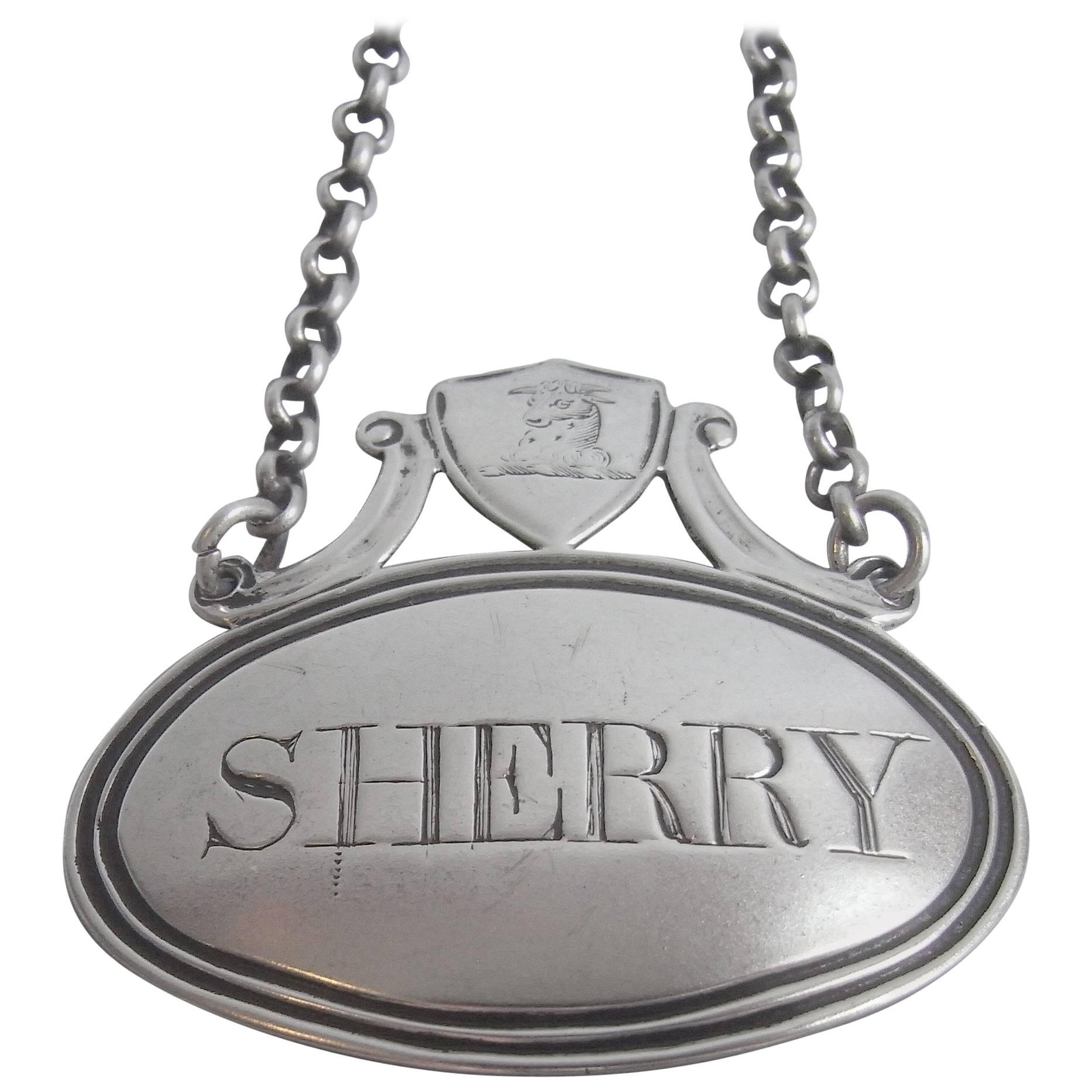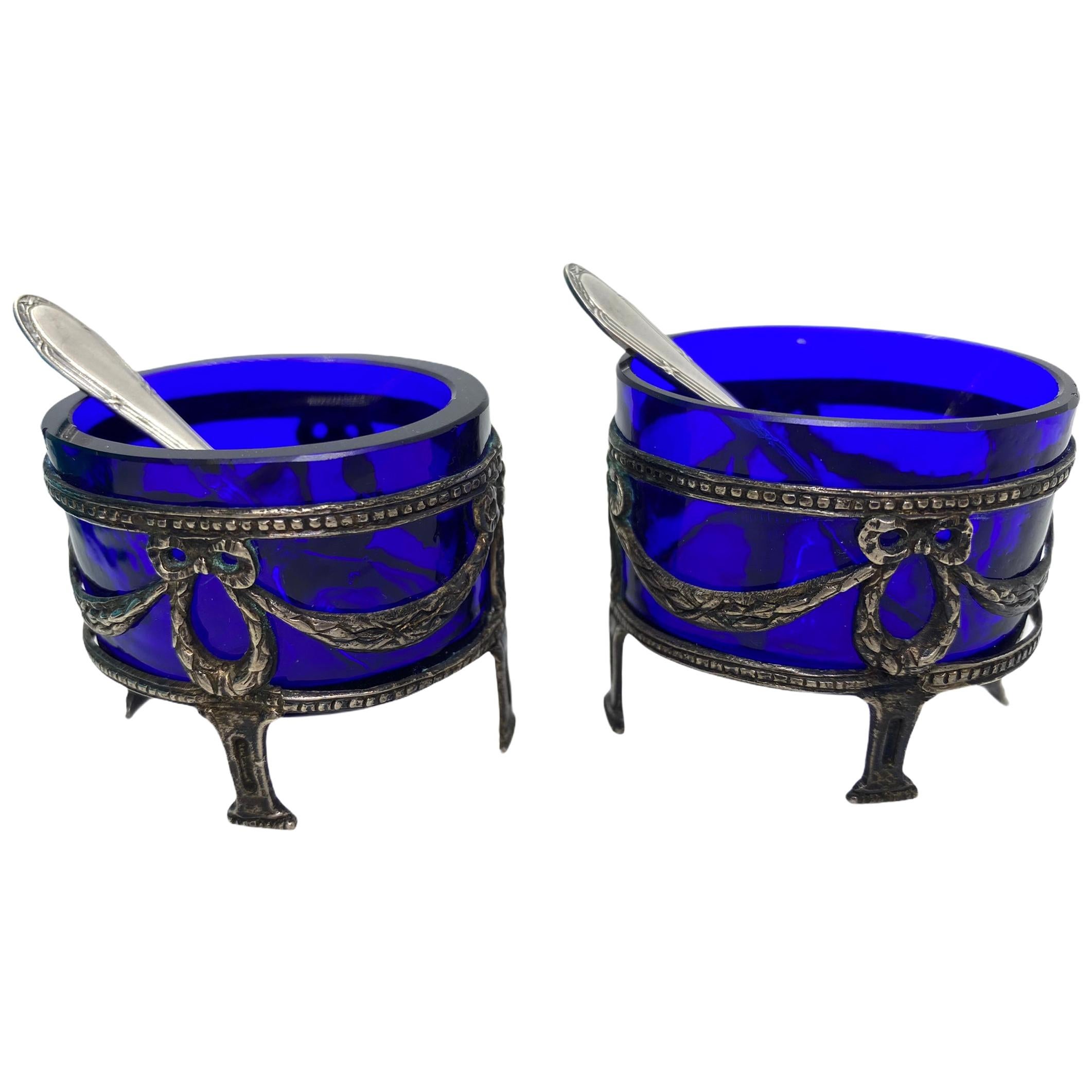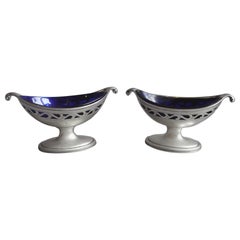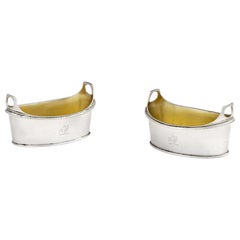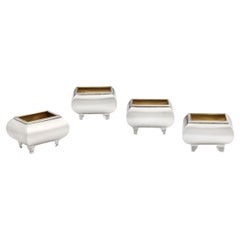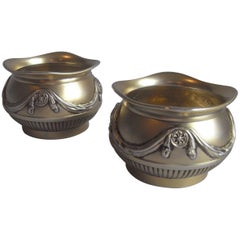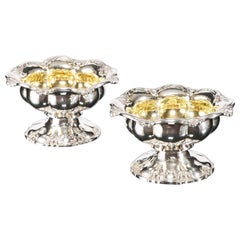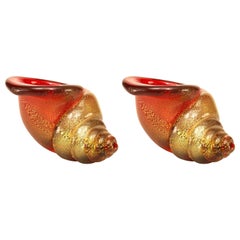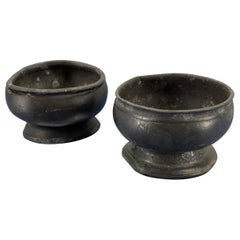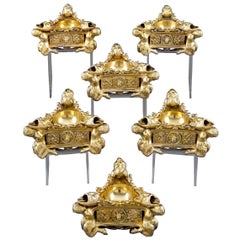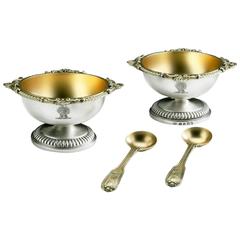
Exceptional and Very Unusual Pair of George III Salt Cellars by Paul Storr
View Similar Items
Want more images or videos?
Request additional images or videos from the seller
1 of 4
Exceptional and Very Unusual Pair of George III Salt Cellars by Paul Storr
About the Item
About the Seller
5.0
Recognized Seller
These prestigious sellers are industry leaders and represent the highest echelon for item quality and design.
Established in 1967
1stDibs seller since 2013
27 sales on 1stDibs
Authenticity Guarantee
In the unlikely event there’s an issue with an item’s authenticity, contact us within 1 year for a full refund. DetailsMoney-Back Guarantee
If your item is not as described, is damaged in transit, or does not arrive, contact us within 7 days for a full refund. Details24-Hour Cancellation
You have a 24-hour grace period in which to reconsider your purchase, with no questions asked.Vetted Professional Sellers
Our world-class sellers must adhere to strict standards for service and quality, maintaining the integrity of our listings.Price-Match Guarantee
If you find that a seller listed the same item for a lower price elsewhere, we’ll match it.Trusted Global Delivery
Our best-in-class carrier network provides specialized shipping options worldwide, including custom delivery.More From This Seller
View AllPair of George III Salt Cellars Made in London by Robert Hennell, 1792
By Robert Hennell
Located in London, GB
A fine pair of George III Salt Cellars made in London in 1792 by Robert Hennell.
The Salts stand on a circular, stepped, oval, pedestal foot, with reeded base. The "Boat" shaped mai...
Category
Antique 18th Century English George III More Dining and Entertaining
Materials
Silver, Sterling Silver
Pair of George III "Tub" Salt Cellars Made in London by Richard Cooke, 1804
By Richard Cooke
Located in London, GB
An unusual pair of George III "Tub" Salt Cellars made in London in 1804 by Richard Cooke.
The Salt Cellars are realistically modelled as Tubs with carrying handles pierced into the ...
Category
Antique 19th Century English George III More Dining and Entertaining
Materials
Silver
Set of Four George III Salt Cellars Made in London by Solomon Hougham, 1805
By Solomon Hougham
Located in London, GB
A very unusual set of four George III Salt Cellars made in London in 1805 by Solomon Hougham.
The Salt Cellars are modelled in a very unusual design and each stands on four unusual ...
Category
Antique 19th Century English George III More Dining and Entertaining
Materials
Silver
Very Fine Pair of Silver Gilt Neoclassical Revival Salt Cellars Made in Birmi
Located in London, GB
The salt cellars are of a most unusual design and have a baluster form with everted dipping rim. The sides are decorated with a lower lobed band and the upper section is decorated wi...
Category
Antique Late 19th Century English More Dining and Entertaining
$612 / set
Free Shipping
Pair of George III Neo Classical Salt/Spice Pedestals by Robert Hennell, 1777
By Robert Hennell
Located in London, GB
A very rare pair of George III Neo Classical Salt/Spice Pedestals made in London in 1777 by Robert Hennell.
These very rare pieces stand on a very unusual domed foot, with a beaded ...
Category
Antique 18th Century English George III More Dining and Entertaining
Materials
Silver
Pair of Early George III Salt Cellars
By John Munns
Located in London, GB
A pair of early George III salt cellars
1761-1762
John Munns (worked from circa 1760)
London.
Category
Antique 18th Century and Earlier English Tableware
You May Also Like
Pair of Early Victorian Silver Salt Cellars, 1839
By Joseph Angell I & John Angell I 1
Located in London, GB
Pair of early Victorian antique silver salt cellars with circular melon fluted bodies, spreading circular bases and decorated with scroll a...
Category
Antique 19th Century English Victorian Tableware
Materials
Silver, Sterling Silver
Pair of Italian Venetian Murano Nautilus Salt Cellars
Located in Queens, NY
PAIR of Italian Venetian (1930) Murano ruby red and gold dusted glass salt and pepper holder in the form of a nautilus shell. (PRICED AS PAIR)
Condition: Good; Wear consistent with ...
Category
20th Century Italian Baroque More Dining and Entertaining
Materials
Glass
Pair Of Danish 18th Century Pewter Salt Cellars
Located in Haddonfield, NJ
Pair of Danish 18th century pewter salt cellars.
Category
Antique 18th Century Danish Folk Art Platters and Serveware
Materials
Pewter
$264 Sale Price
37% Off
Continental Silver Gilt Salt Cellars
Located in New Orleans, LA
This set of six 19th century Continental silver gilt salt cellars take the triangular form of silver salts used by the affluent in Renaissance-era Germany. The salts are masterfully executed in a bold Mannerist style...
Category
Antique 19th Century Unknown Renaissance Tableware
Materials
Silver
$28,850 / set
Pair of Vintage French Salt Cellar or Caviar Dishes, France 1890s
Located in Nuernberg, DE
A lot of two vintage decorative open salts or caviar pots. Made of silver plate metal and glass inserts. A nice original vintage item for displaying or just to use on your table. Eac...
Category
Antique Late 19th Century French Art Nouveau More Dining and Entertaining
Materials
Metal, Silver Plate
exceptional George III teapot by preeminent silversmith Paul Storr, 1793
By Paul Storr
Located in Tel Aviv - Jaffa, IL
This rare and exceptional George III teapot is the work of preeminent Georgian silversmith Paul Storr, it is one of his earliest works, the date mark on this pieces of the year 1793 which is the first year Storr marked items with his own initials (P S)
The teapot is designed in the neoclassical taste with some Chinese influences, or Chinoiserie taste, even the figure on the cover of the teapot is Chinese.
It is very hard to impossible to find works from this early period with this interesting Royalty provenance.
The family crest on the front is of the Tollemache family, and dating of The teapot indicate It belonged and probably commissioned by or as a gift to William Manners Tollemache, Lord Huntingtower, William, On 12 January 1793, at the Age of 26, he Was created a Baronet, of Hanby Hall in the County of Lincoln.
So this teapot was commissioned to celebrate the occasion.
William Manners Tollemache:
Lord Huntingtower (19 May 1766 – 11 March 1833), known as Sir William Manners, Bt, between 1793 and 1821, was a British nobleman And Tory politician.
Born William Manners, he was the eldest son of John Manners and Louisa Tollemache, 7th Countess of Dysart. On 12 January 1793, at the age of 26, he was Ceated a Baronet, of Hanby Hall in the County of Lincoln.On his mother's Succession to the earldom in 1821, he was styled Lord Huntingtower, and adopted The surname of Talmash or Tollemache
Paul Storr:
(baptised 28 October 1770 in London – 18 March 1844 in London) was an English goldsmith and silversmith working in the Neoclassical and other styles During the late eighteenth and early nineteenth centuries. His works range from Simple tableware to magnificent sculptural pieces made for royalty
Paul Storr was England's most celebrated silversmith during the first half of the Nineteenth century and his legacy lives on today. His pieces historically and Currently adorn royal palaces and the finest stately homes throughout Europe and The world. Storr's reputation rests on his mastery of the grandiose neo-Classical Style developed in the Regency period. He quickly became the most prominent Silversmith of the nineteenth century, producing much of the silver purchased by King George III and King George IV. Storr entered his first mark in the first part of 1792, which reflects his short-lived partnership with William Frisbee. Soon after, he Began to use his PS mark, which he maintained throughout his career with only Minor changes. His first major work was a gold font commissioned by the Duke of Portland...
Category
Antique 1790s English Neoclassical Tea Sets
Materials
Silver
Recently Viewed
View AllMore Ways To Browse
Antique Salt Cellars With Spoons
Ouija Board
Outdoor Locker
Outeiro Agueda
Outrigger Coffee
Oval 2 Tier Coffee Table
Oversized Crayons
Owl Menu Holders
Owl Wine Cooler
Owls Jade Pendant
Oxford Hall Flatware
Oyster Ate
Oyster Burl Game Table
Oysterwood Cabinet
P Sougy
Pa Grandfather Clock
Pace Collection King Bed
Pace Floating Console
